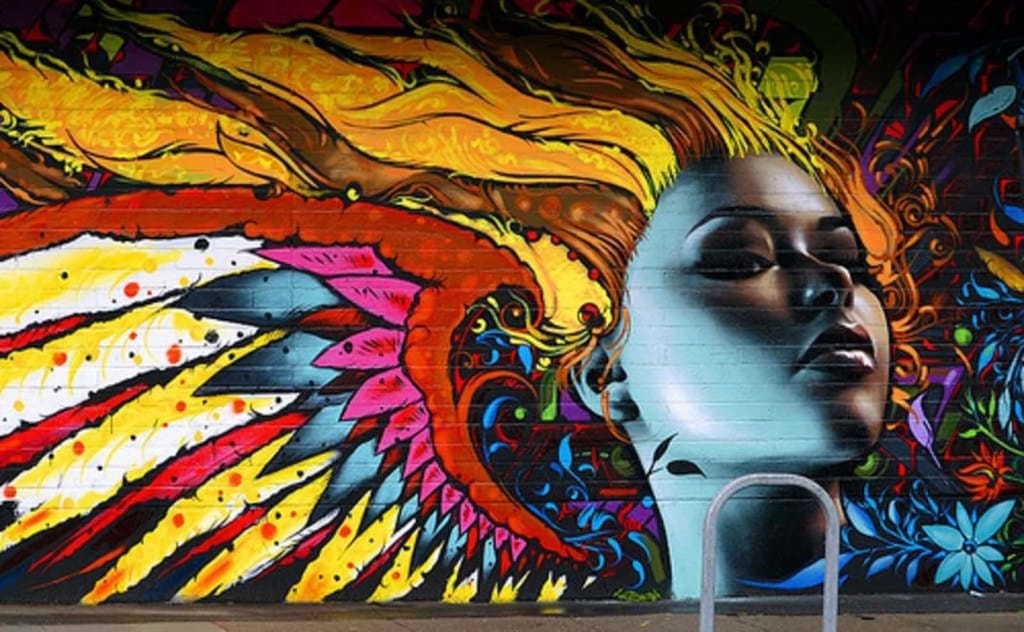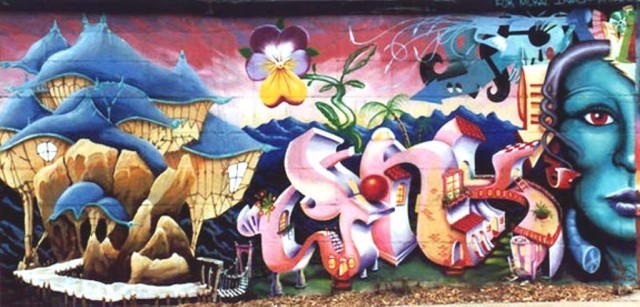In New York City from 1971-1975, a generation of kids under the ages of 19 developed a signature art form they displayed throughout the city subway transit system. Artists such as Lady Pink, Stay High 149 and Zephyr began gaining attention from the media and art worlds when they bombed and tagged trains with their name and spray paint memorials. Each New York graffiti artist had their own signature tag that coincided with adding their street number to their nickname in order to distinct themselves and their style from the growing and mobile graffiti art underground. Originally dubbed vandals, criminals and punks these young artists became pioneers for the graffiti art movement that has since popularized throughout the United States.
Graffiti art has transformed drastically since the mid-1970s, but the purpose and motivation remains the same for the next generation of young street artists. Like expressionism, surrealism and other art forms, urban art is a practice of self-expression and creativity that involves precision, patience and imaginative vision. Street art is also not a random act of defacement as urban artists attempt to communicate about social and political injustices through their art work to the masses. But unlike these accepted and appreciated art forms, graffiti and street art is an illegal act on a wall, train or street block that is out in the public. The term “post-graffiti” has been created to distinguish public artwork from vandals and territorial gang graffiti, but graffiti art still receives a prejudiced reputation from the majority populace.
Despite negative criticisms and perceptions, graffiti art has grown into a thriving subculture spanning coast-to-coast from the movement’s roots in New York City to the museums of Los Angeles. Founded in New York, the Movement of Graffiti Art (MOGA) was established to educate people on their conceptions of graffiti art and market the artistic venue. MOGA promotes street art as a form of urban expressionism that promotes thought and appearance that is significantly distinct from vandals and taggers. The organization also acts as a networking and connection point for experienced and aspiring artists where they can share ideas and techniques as well as promote and educate the general public on the scrutinized art form.
MOGA also teamed up with City Culture New York (C2NY) and held a contest for young, aspiring urban artists to display their work at the graffiti Mecca 5 Pointz. Since 1993, the 200,000 square foot factory building in Long Island City has acted as an outdoor art exhibit where street artists around the world can display their works and interactions. The property is in jeopardy, however, as 5 Pointz is planned for a redevelopment with high-rise residential homes. Despite the building’s fate, artists continue to feature galleries and hold events to expose the world of graffiti art.
In 2011, graffiti art was displayed for the West Coast when the Museum of Contemporary Arts in Los Angeles (MOCA) featured the ‘Art in the Streets’ exhibit. MOCA became the first major museum to display and survey a visual history of graffiti and street art, while featuring artists such as Banksy, Shepard Fairey, Swoon and Space Invader. ‘Art in the Streets’ instantly became the most attended show in the museum’s history, but received negative criticism from the surrounding neighborhood that accused MOCA of attracting illegal taggers to the city.
Graffiti art has slowly progressed into the mainstream art world and has received national and global recognition through programs like MOGA and MOCA, but the expressive art form continues to speak for itself with its guerrilla style and social and political undertones.
http://youtu.be/Sd2IU1aIe5c
[sdonations]2[/sdonations]


